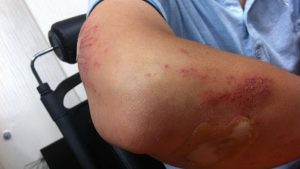Injuries are a part of life and can happen to anyone at any time. Whether it’s a sports-related injury, an accident, or a medical condition, the recovery process can be physically and emotionally challenging. However, it’s essential to remember that achieving optimal health during injury recovery is not only possible but crucial for a successful rehabilitation journey. This comprehensive guide explores the key steps and strategies to help you recover from an injury while maintaining and even improving your overall health.
Understanding the Injury Recovery Process
When you are injured, your priority should be getting better. However, if someone else’s negligence causes your injuries, you may be entitled to compensation to help you further with your recovery. In this case, a reputable personal injury lawyer suggests you document each stage of your recovery process because you can use this later as evidence for your claim. The recovery process typically consists of four main stages:
- Immediate Treatment: This is the phase right after the injury occurs. It involves first aid, medical evaluation, and stabilizing the injury. The goal is to prevent further damage and manage pain.
- Rehabilitation: Once the initial treatment is completed, the rehabilitation phase begins. This phase includes physical therapy, exercises, and interventions to restore functionality, mobility, and strength. It can be a lengthy process, depending on the nature and severity of the injury.
- Recovery and Healing: As rehabilitation progresses, the body’s natural healing mechanisms come into play. This is when damaged tissues are repaired, and inflammation decreases. Nutrition and overall health play a vital role during this stage.
- Return to Normal Activity: The final stage involves returning to normal activities, whether sports, work, or daily life. This stage may require adjustments in your lifestyle or the use of protective gear to prevent re-injury.
Phase 1: Immediate Treatment
The first phase, immediate treatment, is crucial for preventing complications and setting the foundation for a successful recovery. Don’t delay seeking medical help if you’re injured. Whether it’s a visit to the emergency room or your primary care physician, prompt evaluation is essential to assess the extent of the injury and begin the healing process. Adhere to the treatment plan provided by your healthcare provider. This may include medications, rest, and immobilization. Following medical advice reduces the risk of complications and ensures a smoother transition to the rehabilitation phase.
Pain management is a critical aspect of injury recovery. Your healthcare provider may prescribe pain medication, but you can also explore non-pharmaceutical options like ice packs, elevation, and relaxation techniques to alleviate discomfort. Proper nutrition and hydration are necessary for the body to initiate the healing process. Nutrients like protein, vitamin C, and zinc are essential for tissue repair. Don’t underestimate the emotional impact of an injury. Seek emotional support to help you cope with the stress and emotional challenges often accompanying injuries.
Phase 2: Rehabilitation
Rehabilitation is the heart of the recovery process. In this phase, you work on regaining strength, mobility, and functionality. Achieving optimal health during rehabilitation involves the following strategies:
- Choose the Right Healthcare Providers: Ensure you have a skilled and experienced healthcare team, including physical therapists, rehabilitation specialists, and orthopedic physicians. They will design a customized rehabilitation plan based on your injury.
- Adhere to Rehabilitation Protocols: Follow your rehabilitation plan diligently. This may involve exercises, stretches, and therapies to improve your condition. Consistency is critical to successful rehabilitation.
- Set Realistic Goals: Work with your healthcare providers to set realistic goals for recovery. These goals can help keep you motivated and focused on your progress.
- Pain Management: Pain may still be a part of your rehabilitation phase. Communicate your pain levels to your healthcare team so they can adjust your treatment plan as needed. There are various pain management techniques, including physical modalities and medications.
- Rest and Recovery: Balancing physical activity with rest is crucial. Overexertion can lead to setbacks, so giving your body time to heal and recuperate between rehabilitation sessions is essential.
- Holistic Health: Focus on your overall well-being during rehabilitation. Ensure you eat a balanced diet, stay hydrated, and get adequate sleep. A holistic approach to health can speed up the recovery process.
Phase 3: Recovery and Healing
The recovery and healing phase is where your body’s natural healing mechanisms take over. To optimize your health during this stage, consider the following:
1.Nutrition is Key: A healthy diet rich in essential nutrients is vital for tissue repair and healing. Foods with protein, antioxidants, and omega-3 fatty acids can aid recovery.
2.Stay Active: Even if you’re not engaged in full-scale rehabilitation, staying active within the boundaries set by your healthcare team can promote circulation and aid the healing process.
3.Stay Connected: Maintain a robust support system during this phase. Share your progress and concerns with friends and family, and consider support groups if your injury has a specific focus (e.g., sports injury or chronic condition).
4.Follow Up with Healthcare Providers: Follow up with your healthcare providers to monitor your progress. They can make adjustments to your treatment plan as needed.
Phase 4: Return to Normal Activity
Returning to regular activity doesn’t mean your recovery journey is complete; it signifies a significant milestone. Return to normal activities in consultation with your healthcare team. Rushing back too soon can lead to re-injury or complications. If your injury necessitates it, use protective gear or devices to reduce the risk of further harm. For example, knee braces, helmets, or support belts can provide added safety. Continue incorporating regular physical activity into your routine. This helps maintain the strength and mobility you’ve gained during rehabilitation.
Be aware of your movements, especially when returning to normal activities. Pay attention to your body’s signals and avoid pushing too hard too soon. Keep up with regular check-ups with your healthcare providers to monitor your progress and ensure that you’re healing properly. Depending on your injury, you may need to take preventative measures to reduce re-injury risk. This could include exercises to strengthen specific areas or techniques to improve posture and form.

The journey from injury to recovery is challenging, but achieving optimal health during this process is not only possible but essential. Following the strategies outlined for each recovery phase can maximize your chances of a successful rehabilitation journey. Remember that patience, determination, and a holistic approach to health are critical to your recovery and overall well-being. Your healthcare team, supportive friends and family, and a positive mindset can be your allies in this journey, helping you emerge from your injury stronger and healthier.

